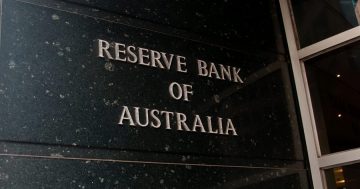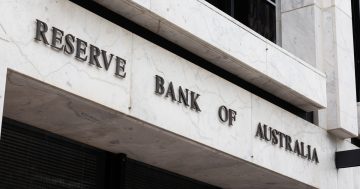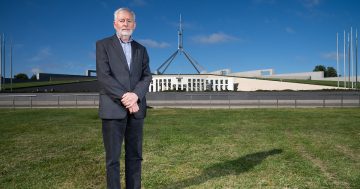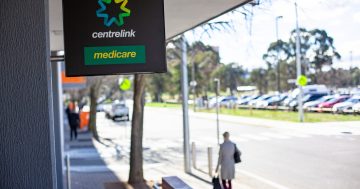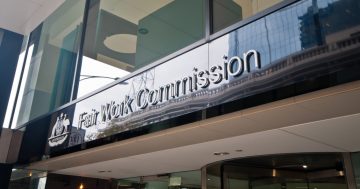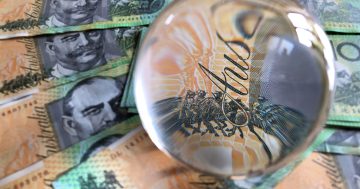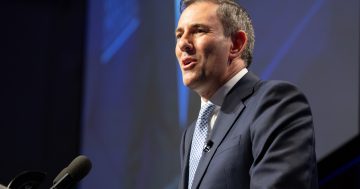Stephen Koukoulas* says rising inflation has already increase household costs and high inflation will impose a financial burden on consumers.
 During 2021, Australia’s inflation rate picked up sharply.
During 2021, Australia’s inflation rate picked up sharply.
From 2017 through to the start of 2021, the annual rate of inflation averaged just 1.5 per cent, which was one of the longest periods where inflation had been so low.
But that was the end of the low-inflation era because in the June quarter of 2021, inflation spiked to 3.8 per cent and it ended 2021 at a still-hefty 3.5 per cent.
It’s likely to increase further in 2022.
Inflation is the rate at which prices change.
In this case, reference is being made to prices of goods and services in a ‘basket’ that the average householder buys each day, month, quarter or year.
Sometimes, like for cars or televisions, every few years.
The prices of these items are collated by the Australian Bureau of Statistics and fed into the consumer price index.
Managing the rate of inflation is the policy domain of the Reserve Bank of Australia (RBA).
It does this by adjusting interest rates, up and down, as it aims for annual inflation to be between 2 and 3 per cent.
This is not an ‘electric fence’ target and, as the graph shows, an occasional spike above or below the target is not usually a concern for its policy settings, as long as the move is only temporary.
With inflation now clearly marching higher as the result of strong economic conditions, a tighter labour market – with the unemployment rate poised to hit a 45-year low – and some supply shortages allowing businesses to boost their prices, the focus is on the need for the RBA to lift interest rates from the 0.1 per cent level – put in place when it thought inflation would stay at 1.5 per cent and the unemployment rate would rise above 10 per cent.
What does it actually mean?
If you have the same spending patterns as the average householder, the amount you are spending rose 3.5 per cent during 2021.
Unless your take home pay rose by at least 3.5 per cent, you would have had to compromise on your spending, save less or borrow money to still purchase the same items.
And the higher the inflation rate, the more your purchasing power, or indeed your standard of living, suffers.
In terms of the most recent inflation data, here is a sample of the price increases of selected goods and services through 2021:
- Beef and veal – 8.1 per cent
- Vegetables – 6.1 per cent
- Accessories and clothing – 6.2 per cent
- New dwelling purchase – 7.5 per cent
- Dwelling maintenance – 5.7 per cent
- Furniture – 5.7 per cent
- Child care – 6.5 per cent
- Medical, dental care – 3.9 per cent
- Motor vehicles – 6.3 per cent
- Petrol – 32.3 per cent
- Motor vehicle maintenance – 4.3 per cent
- Postal services – 4.6 per cent
- International travel – 20.7 per cent
- Veterinary services – 6.0 per cent
The price of some items fell in 2021, for example games and toys, books, household appliances, communications, men’s shoes and fruit.
It is clear from some of these price changes why a period of high and rising inflation is a thing to be nipped in the bud wherever possible.
Most of the items with large price increases are essentials and difficult to cut back on.
In the US, annual inflation is 7.5 per cent, which is a pace that is imposing a huge impost on consumers.
While Australia’s inflation rate is unlikely to hit that level, it is likely to get close to 5 per cent during 2022, especially with cost pressures for businesses rising at an alarming rate.
World commodity prices – and note the price of oil and, therefore, petrol in particular – are a high-profile example showing how those inflation risks have built around the world.
High inflation will impose a financial burden on consumers and is something that policy makers should be working to counter.
And that means – as has been discussed in recent months – the need for a series of interest rate increases.
The RBA, for reasons that remain confused and inconsistent, is refusing to fully acknowledge the inflation risks and is pushing back on the urgency for a policy change to rein in inflation.
That attitude and indeed, inaction, may change in the next few months.
As inflation rises to rates well above the RBA forecasts, it will need to respond with a tightening of monetary policy.
While that may impact more on highly indebted mortgage holders, it will help to cool some of the existing inflation pressures and, in time, improve those cost-of-living pressures that are impacting consumers right now.
*Stephen Koukoulas is no nonsense economist who calls it without fear or favour.
He is currently Managing Director of Market Economics as well as being a Research Fellow, Per Capita.
This article first appeared at au.finance.yahoo.com.


